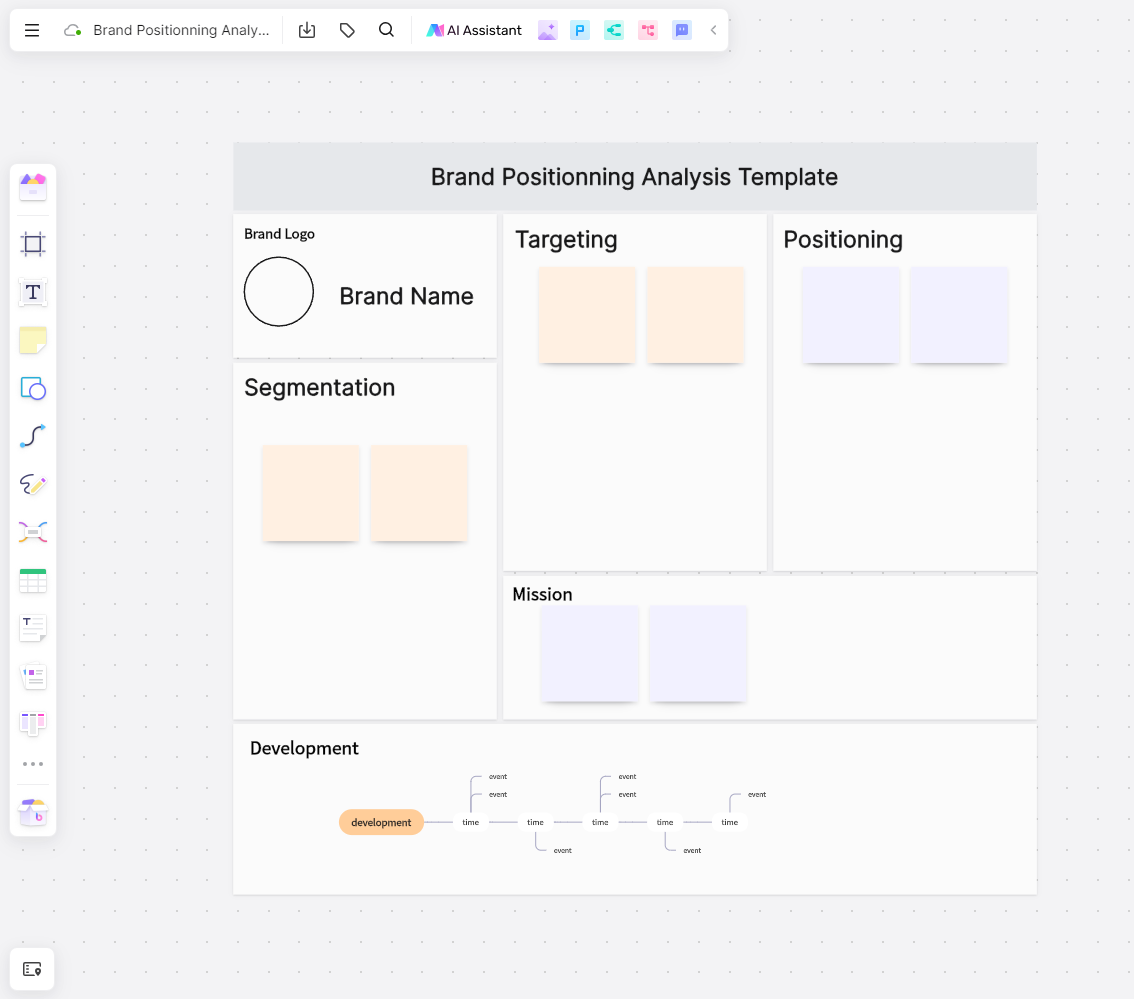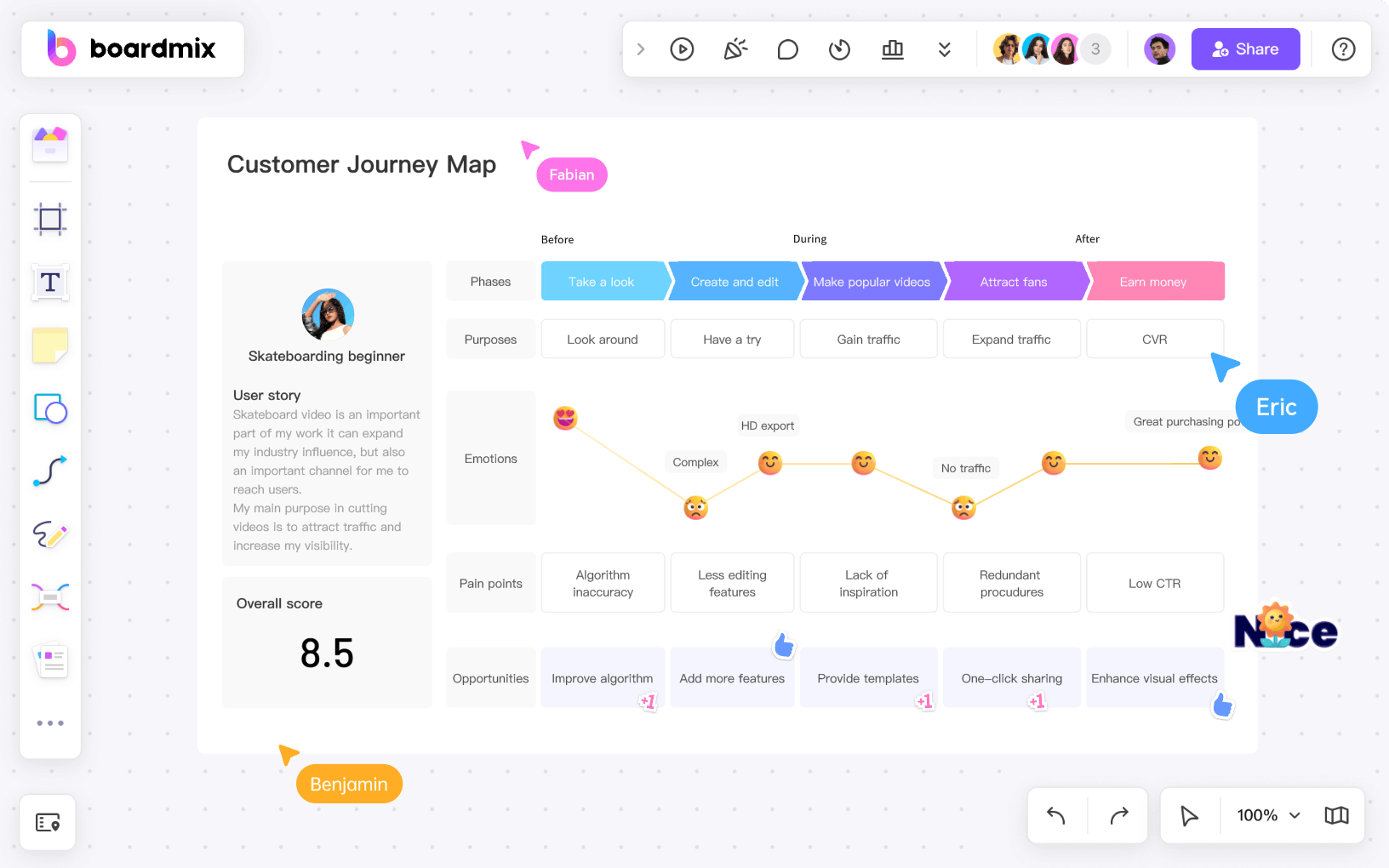In the fiercely competitive world of technology and electronics, understanding a company's segmentation, targeting, and positioning strategy (STP) is crucial to determining its place in the market. In this extensive analysis, we will scrutinize the STP strategy of one of the titans in the tech industry - Samsung.
Samsung Segmentation, Targeting, and Positioning Mind Map
Before we delve into the intricacies of Samsung's STP, we present an innovative way of illustrating this complex concept - a mind map. Our Samsung STP mind map serves as a visual representation that delineates each part of the strategy for clarity and comprehension. It's an all-inclusive illustration, covering everything from Samsung's market segmentation to its targeting techniques and, ultimately, its market positioning.

Market Segmentation of Samsung
Demographic Segmentation
In demographic segmentation, Samsung showcases remarkable versatility. Catering to a diverse array of age groups, Samsung designs products for every stage of life, from teenagers hooked on the latest mobile technology to elderly customers in need of easy-to-use home appliances. In terms of gender, both males and females find a plethora of suitable products within Samsung's expansive range. From an income perspective, Samsung targets consumers across the income spectrum. Their extensive product line features high-end devices such as the Samsung Galaxy S21 for premium customers, affordable alternatives like the Samsung Galaxy A series for the middle-income segment, and even cheaper offerings for low-income individuals. Thus, Samsung's demographic segmentation forms a cornerstone of its marketing strategy.
Psychographic Segmentation
Samsung's psychographic segmentation plays an instrumental role in meeting customer expectations and needs. The brand primarily attracts consumers with a high-tech lifestyle, those who are always on the lookout for innovative and cutting-edge products. Its powerful smart TVs, advanced smartphones, versatile smartwatches, and other innovative gadgets appeal to these tech-savvy individuals. Samsung also appeals to status-conscious consumers by offering high-end products that exude luxury and sophistication.
Behavioral Segmentation
Behavioral segmentation is another tool in Samsung's marketing toolbox. They identify customer groups based on their behavior, consumption patterns, and decision-making processes. Samsung offers an array of products to meet various customer needs. For example, for customers seeking the latest and best features in a smartphone, they offer their flagship Galaxy S series. Meanwhile, they offer more affordable options like the Galaxy M series for customers who prioritize value for money.
In addition to behavioral characteristics, Samsung also categorizes its customers based on usage rate – whether they're heavy, medium, or light users. Loyalty also comes into play. Samsung values its loyal customers and rewards them with incentives such as discounts on future purchases, membership benefits, and exclusive previews of new products.
Geographic Segmentation
On a global scale, Samsung has implemented geographic segmentation successfully by catering to both urban and rural markets in developed and developing nations. Whether it's selling high-end smartphones in bustling cities or providing durable TVs in remote towns, Samsung addresses varying demands based on geographical conditions.
Targeting of Samsung
The beauty of Samsung's marketing strategy lies in its differentiated targeting strategy. Instead of a one-size-fits-all approach, Samsung believes in offering a personalized experience to its consumers.
Differentiated Targeting Strategy
Samsung's product portfolio is diversified, comprising low-end to high-end products, thus catering to consumers from different economic backgrounds. Each of their products is meticulously crafted to cater to the specific needs and wants of a distinct consumer segment.
For instance, Samsung targets premium consumers with its flagship products like the Galaxy S and Note series. These smartphones, known for their superior technology and innovative features, appeal to consumers who seek the very best in mobile technology.
Meanwhile, mid-range smartphones like the Galaxy A series target consumers who want a good mix of performance and affordability. The target demographic here would be young adults or working professionals who need a reliable smartphone but might not have the budget for a high-end model.
Finally, for budget-conscious consumers, Samsung offers products like the Galaxy M series. These smartphones are marketed to attract price-sensitive consumers who prioritize affordability without compromising on necessary features.
Targeting Based on Geographic Location
In its targeting strategy, Samsung takes into account the geographic location of its consumers. In developing regions where purchasing power is lower, Samsung targets consumers with its affordable product range to achieve market penetration. On the other hand, in developed regions with higher purchasing power, Samsung pushes its premium product line.
Advertisement and Promotional Strategy
Samsung employs different advertising strategies to target these different segments effectively. For its premium products, Samsung uses a pull strategy that focuses on creating demand in the market through intensive advertising and promotional campaigns. However, for the more affordable range, Samsung implements a push strategy focusing on wide distribution and availability of the product in the market.
Positioning of Samsung
Samsung's positioning strategy has been key to its success as a market leader in various product categories. The company effectively communicates its unique value proposition to consumers through various elements, thereby solidifying its position in the market.
Premium Brand Positioning
Samsung's primary positioning strategy centers around portraying itself as a premium brand offering superior technology and design. They achieve this through their high-end products such as the Samsung Galaxy S series and Samsung QLED TVs, which come with cutting-edge features, exceptional quality, and a hefty price tag. The target audience for these products is mainly the upper-middle and upper-income class who are willing to pay more for high-end technology.
Innovation and Future-Driven Positioning
"Inspire the World, Create the Future" - Samsung's brand slogan succinctly encapsulates its positioning as an innovative and future-driven company. It's not just about manufacturing gadgets; it's about revolutionizing technology to shape a better future. By investing heavily in R&D, Samsung constantly churns out groundbreaking technologies that set industry benchmarks. Its Galaxy Fold series, the first commercially available foldable smartphone, bears testimony to its innovative prowess.
Value-Based Positioning
Simultaneously, Samsung has carved out a space in the value-for-money segment. By offering feature-rich smartphones and consumer electronics at affordable prices, it appeals to value-conscious consumers. Products like the Samsung Galaxy M series and A series deliver strong performance and good quality at a lower price point.
Global Leadership Positioning
Samsung also positions itself as a global leader in multiple product categories, including smartphones, TVs, semiconductors, and more. It showcases its leadership through significant marketing campaigns emphasizing its dominance in sales and technology innovation.
Samsung Segmentation, Targeting, and Positioning Cheat Sheet
For those seeking a quick reference to Samsung's STP strategy, we present a cheat sheet – a succinct summary outlining Samsung’s market segmentation, targeting practices, and positioning in a digestible format.

Key Takeaways: Making Brand Positioning Analysis on Boardmix
Through an adept understanding of their consumers' needs and wants divided across different segments, Samsung creates effective strategies for targeting them and subsequently positioning their products in their minds.
The concept of STP might seem convoluted initially; however, by utilizing our pre-built Market Segmentation Template and STP Analysis Template offered by Boardmix, you can effortlessly understand it. These ready-to-use templates are designed to make complex market analyses manageable and easily understandable.
Understanding your brand's unique position in the market can give your business a competitive edge. Boardmix is an excellent tool for conducting a brand positioning analysis, providing various benefits.

1. Structured Analysis
With Boardmix, you can use or create custom templates for your brand positioning analysis. These templates can guide you through the process, ensuring that all vital factors - such as Unique Selling Proposition (USP), target audience, brand values, brand personality, and key differentiators - are thoroughly addressed.
2. Collaboration
Brand positioning analysis often requires insights from various team members - from marketing to product development. Boardmix's collaboration features make it easy to involve your entire team in the process, facilitating an exchange of ideas and perspectives that can enrich your analysis.
3. Accessibility
With Boardmix, your brand positioning analysis is not just a static document. It's a dynamic resource that's accessible to your team members anytime, anywhere. This makes it easier to keep everyone aligned on your brand's positioning and strategic direction.
4. Iterative Refinement
The market is constantly evolving, and so should your brand positioning. Boardmix makes it easy to update your analysis as your brand grows and the market changes. You can easily add new insights, adjust your strategies, and keep your team informed about these changes.
5. Integrated Feedback
The platform allows stakeholders to provide their feedback directly on the analysis. This integrated feedback system streamlines communication and makes it easier to refine your brand positioning based on valuable input.
6. Historical Reference
Your previous brand positioning analyses on Boardmix can serve as valuable historical references. Comparing your current positioning with past strategies can offer insights into how your brand has evolved.
By facilitating collaboration, structuring analysis, and offering flexibility, Boardmix is a beneficial tool for any company looking to deepen its understanding of its brand positioning.








